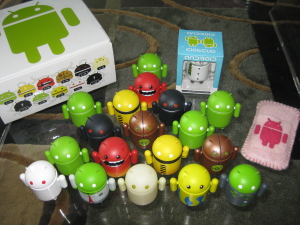Linux Journal has a “New Products” section of their magazine which frequently features (among other things like books and software) new devices that are running the Linux kernel. It’d be interesting to know if their job has gotten easier over the past couple years regarding devices. In addition to my traditional PCs running Linux, the following consumer-level devices which use the Linux kernel: Nexus One phone, B&N Nook, Samsung television and Samsung Bluray player.
The choice of the Nexus One (well, more importantly, the G1 I had prior to it) was influenced by it’s Linux-ness. For all the negative press about the Android kernel being highly modified and criticism about lack of timely upstream merging of their changes, I’m quite sure that it (and Verizon’s advertising machine) has put Linux into the hands of more people than anything else ever has. That said, as far as smart phones go I probably would have gone the same way even if it didn’t have a Linux kernel – the Android platform allows for the flexibility I want and the culture of free (both beer and freedom) in the way applications are submitted to the Market and deployed appeals to me. Even the Android branding itself is Creative Commons 3.0 Attribution License, allowing everyone from individuals on Etsy to toy companies to produce Android-branded products with ease. All of this makes for a very happy me! Especially when I see MJ walk through the door with a whole case of Android toys. I’m still gushing over these things.

You could say that the purchase of the Nook was influenced by it’s Linux-ness too, but the Kindle uses a Linux kernel too.
The TV and Bluray player? We didn’t even know they ran Linux until a few weeks ago when MJ was browsing through the TV menus and stumbled upon the open source licenses.
It will be interesting to see what the coming years bring with regard to the proliferation of Linux devices and where the desktop itself goes. I have to admit that I think Chrome OS (or the like) is going to become a cheap and compelling option for a lot of people as even more services move to the cloud.

